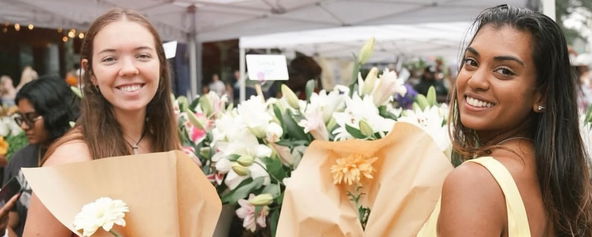
Parity in pickleball is growing, especially in men’s singles
DALLAS, TX - Fact: three of the top eight seeds—Ben Johns, Connor Garnett and JW Johnson—in the men’s pro singles draw at the PPA Masters lost their first matches.
Another fact: three of the next eight seeds—Jaume Martinez Vich, Travis Rettenmaier and Hayden Patriquin—also lost their first matches.
Now, some may say that this is the result of it being the first tournament of the year, and that some of the top players may still be getting into the swing of things.
ADVERTISEMENT
Okay, sure, but then explain why the semifinals for all the other pro events featured two top-eight seeds competing against each other.
Others may say that this is the result of players still adapting to the progression draw the PPA is introducing at 10 events this year.
That doesn’t add up, either. In fact, the progression draw should theoretically benefit the top seeds in singles more than anyone else.
Let me explain what I mean.
In 2023, the pickleball world witnessed the crucial role of momentum in singles. Once every few tournaments, someone without a previous breakthrough performance would come through the woodwork to defy expectations.
It was Martinez Vich at the Texas Open, Ryan Eveloff at the Seattle Open, Chris Haworth at TOC—all of these guys caught fire early on singles day and earned some of their best results of the season.
The strongest example of this, of course, is Collin Shick at the PPA Florida Open in March.
Shick came through the qualifying draw early in the morning on singles day and went on to earn a spot in the gold medal match, where he fell to Ben Johns in three games.
We’ve seen the role that momentum can play in singles.
The progression draw nerfs the potency of this momentum. There is no ‘singles day,’ so players can’t settle in from match to match like they could with the traditional draws.
In fact, players can play a maximum of two matches per event per day: one in the morning and one in the evening.
Thus, the progression draw protects players (especially the top seeds) from having to play someone who has already won five matches that day and is in the zone. That match-to-match momentum doesn’t play as big of a role in singles as it used to.
Despite this, what I began this article with remains true: six of the top 16 men’s singles seeds lost their first matches at the PPA Masters.
So, why did this happen? What gives?
Parity.
At the pro level, men’s singles draws almost always have the most players trying to qualify. Take the APP tournament in Punta Gorda, FL this past week as an example.
There were 55 players trying to qualify for just four open spots in the men’s singles main draw, and there were still some players left out of the qualifying draw because it was at capacity.
More importantly, though, the players in these play-in draws are really, really good.
There were pro-medal winning players who had to come through the qualifying draw in Palm Springs, including Haworth and frequent APP medalists Hunter and Yates Johnson.
Out of those three, only Haworth made it, and he was one of three qualifiers who continued to make noise in the main draw.
Patrick Kawka beat Gabriel Tardio and Roscoe Bellamy and had a one-game lead on eventual champion Dylan Frazier in the Round of 32; Marcel Chan took out Rettenmaier and pushed Tyson McGuffin to a deciding game; and Haworth got past both Ryan Sherry and Martinez Vich in three games.
All this to say that the gap between the top-seeded singles players and the qualifiers, especially on the men’s side, has never been closer.
This parity in pickleball means that draws will be deeper and, more importantly, increasingly competitive. The usual suspects (looking at you, Ben Johns) will still get their wins and titles, sure, but most likely not at the rate that they’re used to. And that’s a great thing for the sport.
Related articles

Waters, Johns dominated the podium in 2025
Anna Leigh Waters and Ben Johns enjoyed more championship success on the PPA Tour this past year.
6 hours ago
-Jim Ramsey

Vivienne David announces retirement from pro competition
One of the sport's most beloved competitors is hanging up her paddle.
21 hours ago
-Will Daughton

Everything you missed in pickleball pop culture in December 2025
From global travels to contract terminations, it was a busy month in the picklesphere.
4 days ago
-Victoria Radnothy

Pickleball pros share New Year’s resolutions
Chris Haworth, Jay Devilliers, and the Brascia sisters have some fun goals for 2026.
4 days ago
-Victoria Radnothy





